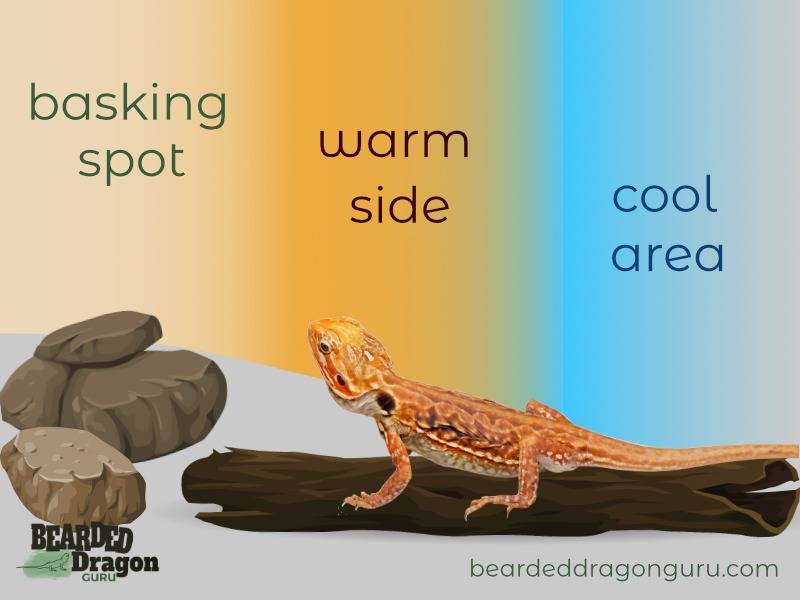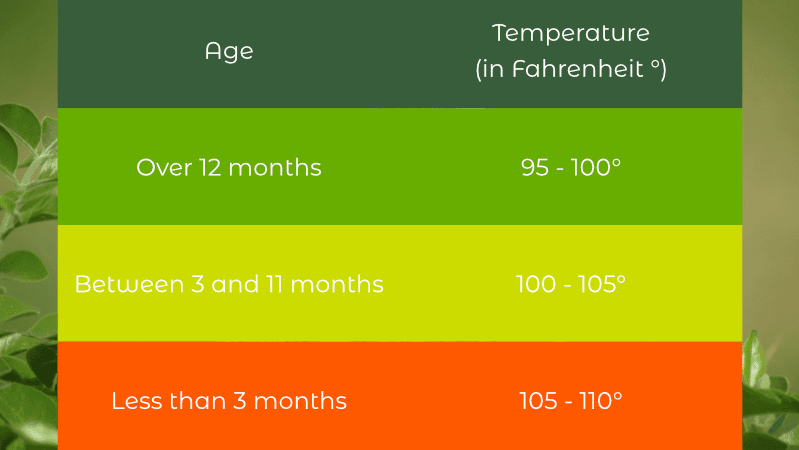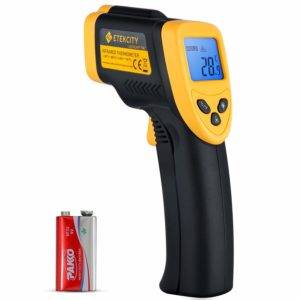The Optimal Bearded Dragon Lighting Setup

Have you been looking for a really simple guide for your bearded dragon lighting setup? There is so much confusing info out there, and you just wanted a simple answer, right?
Well, you will hopefully find this to be one of the simplest guides with answers to the common questions.
First of all, we will look at how to setup your bearded dragon’s lighting. Then we will identify the best lighting options for your beardie.
Then right at the end, there are some answers to some of the most common questions.
What Lights Does a Bearded Dragon Need?
Simply put, your beardie’s tank should have:
- UVB Light
- Heat Lamp
You’ll also need the appropriate fixtures to go along with these. Don’t worry, this guide has you covered on that front too!
So let’s see how to set up your beardie’s lights.
The Optimal Lighting Setup
How Much Light Does a Bearded Dragon Need?
Make sure you set up your bearded dragon habitat so that there are at least three distinct separate areas:
- Basking Spot
- Warm Side
- Cool Area
Having these three zones is key to a healthy and happy beardie.
Keep the light turned on for about twelve hours per day. During the winter months, you may reduce it to eight.
Remember, the key here is imitating a natural habitat, so common sense is critical.
How Hot Should a Bearded Dragon Tank Be?
How hot you should make the basking spot is dependent on the age of your bearded dragon. (All temperatures are in Fahrenheit).
For those over twelve months, 95 to 100 degrees is appropriate.
For juvenile lizards between 3 and 11 months, you can set your basking light to between 100 and 105 degrees.
Finally, for beardies younger than three months, 105 to 110 degrees is safe.
What Bulbs Do I Need?
Keep an eye out for the (Recommended) tag, these are the top products on the market for your beardie right now.
What Lamps Do I Actually Need?
1. A Heat Lamp
One of the best types of heat lamps is a mercury vapor bulb. These bulbs emit strong heatwaves to keep your beardie warm whilst providing essential UVB light at the same time.
They last for a long time (sometimes longer than your average fluorescent bulbs) and have been known to improve overall health as well as appetite in your beardie.
Note: that with this bulb you will require a particular fixture to safely mount the bulb.
2. A UVB Light
Whilst a mercury vapor bulb will supply UVB light to your bearded dragon, it is not enough on its own and it won’t cover the entire tank with UVB light.
It is essential that your beardie receives an ample amount of UVB light to prevent skin-related diseases such as mouth rot or tail rot.
A highly recommended UVA and UVB bulb is the Reptisun UVB strip light. It is great because it covers the majority of the tank to ensure your beardie is getting the UVB light which it needs.
Studies show blocking UVB rays, even with a transparent sheet, can significantly reduce effectiveness.
3. What If It Gets Too Cold?
If you can’t get the right temperature in the tank then try finding a bulb with a higher power (more watts) or you could position the lamp so that it is closer to your beardie’s basking area.
If you live in an area where temperatures are pretty cold at night, you may need to add one extra device and that is a ceramic heat emitter.
The great thing about these little devices is that they give off no visible light.
This means that you can generate heat for your beardie but not keep them awake at night.
Note: You only need a ceramic heat emitter if temperatures fall too low at night. Most regions will be fine without one.
Monitoring Temperatures
Once you’ve set up your bearded dragon habitat with proper lighting and heat, you’ll need to monitor temperatures within the tank. Hand-held infrared thermometers are incredibly useful for spot-checking different areas of the habitat.
Now that we have identified the best products, let’s take a look at how to set these up.
Importance of the Right Temperature
Ensuring that your beardie’s core temperature is kept high enough is essential for its health.
A beardie that is too cold will become lethargic, and its body’s metabolism will slow down.
A slow metabolic rate can lead to stress and putting on too much weight.
Your beardie’s skin may become too soft as well, as heat and light help with scale health. Over time, a cold beardie could result in fatality.
Do I Need To Leave A Light On At Night?
During night-time, you may think you need to leave some of these instruments switched on.
However, your bearded dragon does not require a lighting or heat element setup during the night.
Leaving the bulb on, for example, would disturb your beardie’s natural sleeping cycle.
In the wild, there is no light at night, so it makes sense that your pet’s habitat mimics this environment.
Do I Need a Red Light?
Some bearded dragon lighting setup kits come with a red light bulb. The simple answer to the question is, no you do not need a red lamp at all.
The habitat you are creating for your beardie should be as close to its original environment (the Australian desert) and there are no red lights out there.
If you have a red bulb then you need to get that switched out for the setup above.
Summary
Other than nutrition and food, the lighting setup that you choose to implement in your bearded dragon terrarium will be the most crucial aspect of keeping your beardie happy and healthy.
Cold-blooded reptiles do not survive unless they have access to a lot of light and an ample amount of heat during the day.
Luckily, you will not have to spend an arm and a leg on a proper lighting setup, and bulbs can be easily replaced at low cost.
If your bearded dragon seems more sluggish and lethargic than usual, or if there are changes to its eating habits, then you may want to take another look at your lighting setup.
A beardie that does not have an adequately lit living environment is also more prone to diseases and infections.
Like this article? Pin it on Pinterest







 I was just 15 years of age when I first met a bearded dragon. It was at my friend's house and I instantly grew an immediate attraction to, what has now become, my favourite animal on the planet! Making fantastic pets for both children and adults alike, they each have their own personality and are certainly full of character. There are, though, some important things that we should all know when it comes to caring for these amazing animals!
I was just 15 years of age when I first met a bearded dragon. It was at my friend's house and I instantly grew an immediate attraction to, what has now become, my favourite animal on the planet! Making fantastic pets for both children and adults alike, they each have their own personality and are certainly full of character. There are, though, some important things that we should all know when it comes to caring for these amazing animals!